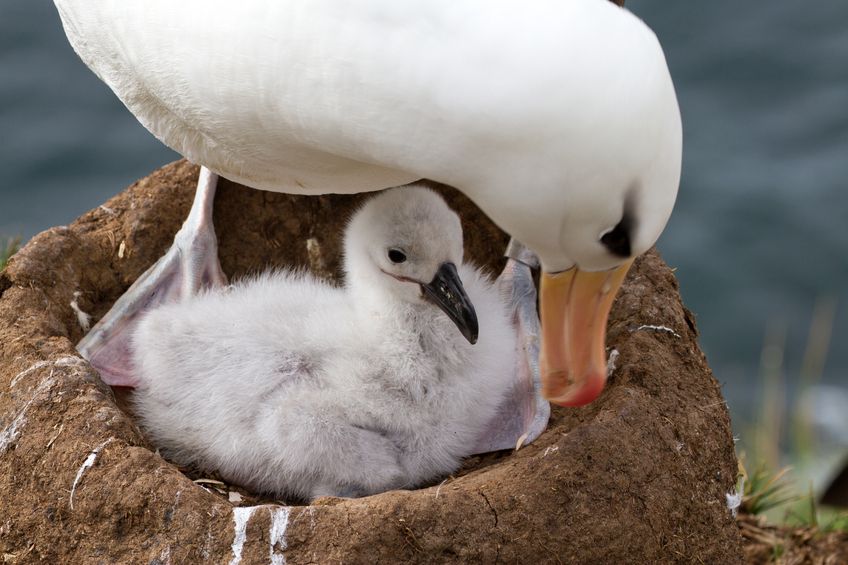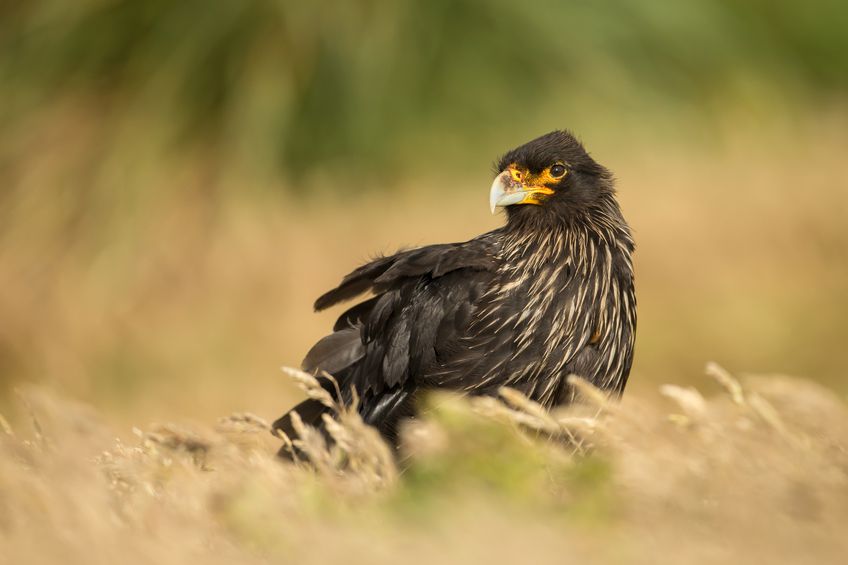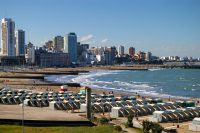The sovereignty of the Falkland Islands might remain a controversial issue, however the exciting possibilities to encounter wildlife that a visit here affords is certainly not contested. Indeed, Falkland Islands tourism revolves around visiting the habitats of a striking selection of animals, that range from penguins to pinnipeds, to albatrosses and oystercatchers. Explore the islands by boat, 4WD or plane between October and March for the best likelihood of spotting some of its most famous inhabitants.
Best locations for Falkland Islands tourism and wildlife watching
Falkland Islands tourism has come to be defined by the 63 species of birds that breed on the island, as well as the five types of penguin and its array of seal populations. What’s more, the world’s largest black-browed albatross colony is located here.
But despite the coastline of this rugged archipelago being a true wildlife haven, few tourists travel here each year, making its multitude of colonies and animal hot spots undisturbed and ideal for close interactions with species in their natural habitats.
Volunteer Point
As the location of the largest king penguin colony of the Falklands Islands, Volunteer Point is one of the most important sites for Falkland Islands tourism. Numbering at over 1,000 breeding adults, with around 500 chicks raised annually, the birds don’t migrate during the year, meaning penguin lovers will be thrilled whichever season they choose to visit the islands.
 Further around the coast, colonies of Gentoo and Magellanic penguins dive into the ocean from the beautiful white sands of Volunteer Beach. The rare species of ruddy-headed geese and Falkland steamer ducks – a flightless bird only found in the Falklands – make up some of the other interesting and unusual birdlife found at Volunteer Point.
Further around the coast, colonies of Gentoo and Magellanic penguins dive into the ocean from the beautiful white sands of Volunteer Beach. The rare species of ruddy-headed geese and Falkland steamer ducks – a flightless bird only found in the Falklands – make up some of the other interesting and unusual birdlife found at Volunteer Point.
How to get to Volunteer Point: Located on the north-eastern edge of East Falkland Island, access to Volunteer Point is via an off-road track that can be very difficult to traverse during wet conditions. It is closed between April and November to preserve its condition and visitors are recommended to travel using a local guide.
Cape Dolphin
On the north coast of East Falkland Island, Cape Dolphin has a series of beautiful beaches from which southern right whales and Commerson’s and Peale’s dolphins can often be spotted. Magellanic and Gentoo colonies also breed along the coast here during the summer months.
Inland, the area is traversed by hiking trails where encounters with soaring Wilson’s storm petrels are not unusual, and visitors can approach the colony of lounging sea lions in the dense tussock grass at the very tip of the point.
How to get to Cape Dolphin: A 4WD and off-road driving experience are necessary to pass along the unpaved road that leads to the cape.
Jason Islands
A remote chain off West Falkland, the Jason Islands are a key feature of Falkland Islands tourism as the location of the world’s largest black-browed albatross colony, which comprises over 200,000 breeding pairs. Colonies of native species such as common diving petrels, upland geese and short-eared owls are also noted on the islands, making it an essential destination for birdwatchers.
 The Falklands are the globe’s most important breeding site for the vulnerable rockhopper penguin species, and the Jason Islands are home to a colony of 142,000 breeding pairs. Although a larger colony exists on Beauchene Island, it cannot be visited by tourists, making an excursion to the Jason Islands ideal for those seeking to encounter this charismatic penguin species in its natural habitat.
The Falklands are the globe’s most important breeding site for the vulnerable rockhopper penguin species, and the Jason Islands are home to a colony of 142,000 breeding pairs. Although a larger colony exists on Beauchene Island, it cannot be visited by tourists, making an excursion to the Jason Islands ideal for those seeking to encounter this charismatic penguin species in its natural habitat.
How to get to the Jason Islands: Visitors can only appreciate the wildlife on these islands via Zodiac boat, although unpredictable weather and strong tidal currents can make landing challenging.
Carcass Island
Carcass Island is situated on the north-west edges of West Falkland. With no cats or rats found here, small bird species thrive, including the endemic Cobb’s wren and short-eared owls. The striated caracara, or Johnny Rook as it is known locally, is a rare bird of prey found most abundantly in the Falklands and particularly here on Carcass.
 Named by BirdLife International as an Important Bird Area, alongside other islands in the West point Island Group, Carcass Island is now recognised as a site of conservation significance for Falkland steamer ducks, ruddy-headed geese and white-bridled finches.
Named by BirdLife International as an Important Bird Area, alongside other islands in the West point Island Group, Carcass Island is now recognised as a site of conservation significance for Falkland steamer ducks, ruddy-headed geese and white-bridled finches.
How to get to the Carcass Island: Access is only via cruise boat or FIGAS (the Falkland Islands Government Air Service).
No comments yet
There are no comments on this post yet.






Leave a comment